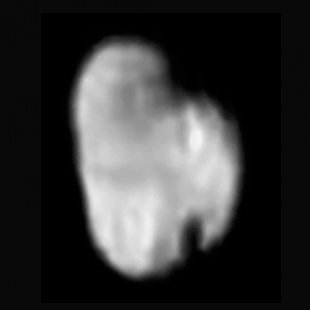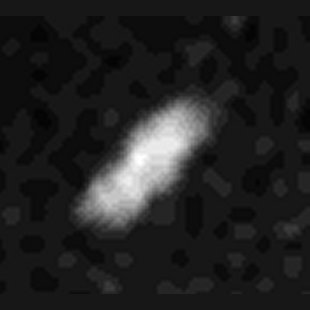
Therefore, these planets could have small moons close in, although not within their respective Roche limits. Neso - Moon profiles 6 Space profiles 869 subscribers 1.5K views 5 years ago This episode is about Neso The moon with the largest semi-major axis of any moon in the solar system It. Even the smallest close-in extrasolar planet, CoRoT-7b, still has a Hill sphere radius (61,000 km) six times its physical radius (approx 10,000 km). At its apoapsis - the farthest point in its orbit from.

The Hill sphere of (66391) 1999 KW4, a Mercury-crosser asteroid that has a moon (S/2001 (66391) 1), measures 22 km in radius.Ī typical extrasolar "hot Jupiter", HD 209458 b, has a Hill sphere radius of 593,000 km, about 8 times its physical radius of approx 71,000 km. Notes, A small irregular moon of Neptune, notable for its immense distance from its primary planet. Nesos eccentric orbit takes it millions of miles from the ice giant. It follows a very inclined and very eccentric orbit illustrated on the diagram in relation to other irregular satellites of Neptune. Heighten the charm of your bathroom by choosing the round Mini Moon Kordura Counter Top Basin. Very little is known about Neso, another of Neptunes extremely distant irregular moons. Hippocamp is Neptunes smallest moon at only 34 kilometres across, and hovers surprisingly close to Proteus, the largest of Neptunes inner moons. An asteroid from the asteroid belt will have a Hill sphere that can reach 220 000 km (for 1 Ceres), diminishing rapidly with decreasing mass. Neso orbits Neptune at a distance of more than 48 million km, making it the farthest known moon of any planet. The moon, named Hippocamp, was discovered in 2013 from archived photos from the Hubble Space Telescope. Neso is about 60 km in diameter, and assuming the mean density of 1.5 g/cm 3.Its mass is estimated at 1.6 × 10 17 kg. It follows a very inclined and very eccentric orbit illustrated on the diagram in relation to other irregular satellites of Neptune. Within the Solar System, the planet with the largest Hill radius (and thus capable of the most distant moons like Neso) is Neptune, with 116 million km, or 0.775 au its great distance from the Sun amply compensates for its small mass relative to Jupiter (whose own Hill radius measures 53 million km). Neso is a moon orbiting Jupiter, the farthest known moon from any planet within our solar system This smooth symbolism perfectly encapsulates the way in which we envision the future of Web3 and all the far-reaching implications that blockchain technology yields. Neso orbits Neptune at a distance of more than 48 million km, making it the farthest known moon of any planet. A spherical geostationary satellite, however, would only need to be more than 6% of the density of water to support satellites of its own. Pandora Close-up at Saturn Explanation: What do the craters of Saturns small moon Pandora look like up close To help find out, NASA sent the robotic Cassini spacecraft, now orbiting Saturn, past the unusual moon two weeks ago. In fact, in any low Earth orbit, a spherical body must be more dense than lead in order to fit inside its own Hill sphere, or else it will be incapable of supporting an orbit. Hippocamp is thought to be a tiny piece of Proteus that was broken off during an impact from an asteroid or comet. A sphere of this size and mass would be denser than lead. Neptune’s moon Proteus, seen by Voyager 2 in 1989. Hill sphere radius R H ~ (1-e) x (a m/R p) x R mĪn astronaut could not orbit the Space Shuttle (with mass of 104 tonnes), where the orbit is 300 km above the Earth, because its Hill sphere is only 120 cm in radius, much smaller than the shuttle itself.

30 kilometer.Rotating-frame depiction of the horseshoe exchange orbits of Janus & Epimetheus Neso is a Moon of Neptune, it has Mean Radius of ca. Info of Planets, Moons, Comets, Asteroids & Celestial bodies

on August 14, 2002, though it went unnoticed until 2003. It is a retrograde irregular moon discovered by Matthew J. 'Thalassa' is also the Greek word for 'sea'. Neso (moon) - Wikipedia Neso (moon) Neso / niso /, also known as Neptune XIII, is the outermost known natural satellite of Neptune. Find size, shape, mean radius, volume, mass, density, surface gravity, type and category of different solar system objects, planets, moons, comets, asteroids, centaurs, kuiper belt objects and different celestial bodies. Thalassa or Neptune IV, is the second closest moon to Neptune.It was named after a daughter of Aether and Hemera from Greek mythology. View from Neso's moon as the sun went over the horizon 21 comments 97 Upvoted Sort by: best level 1 Op 5 mo.


 0 kommentar(er)
0 kommentar(er)
